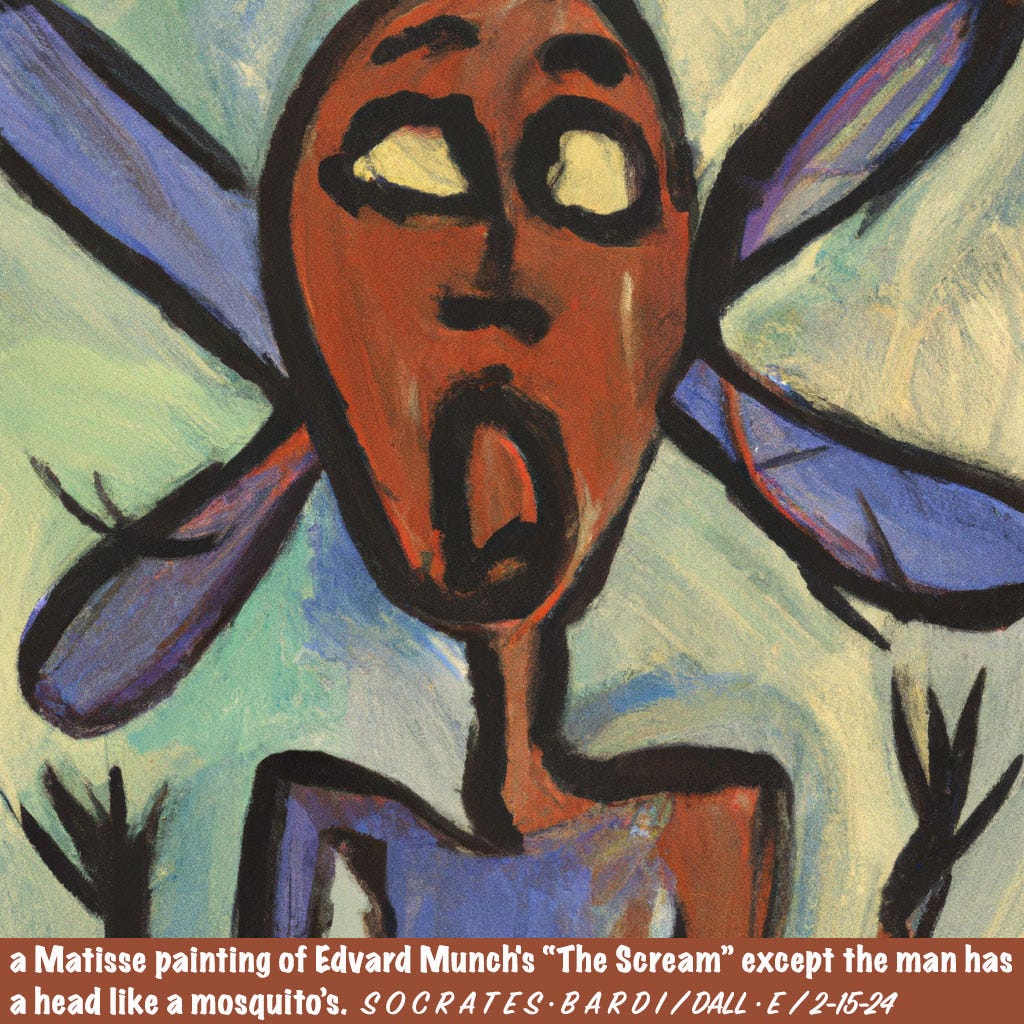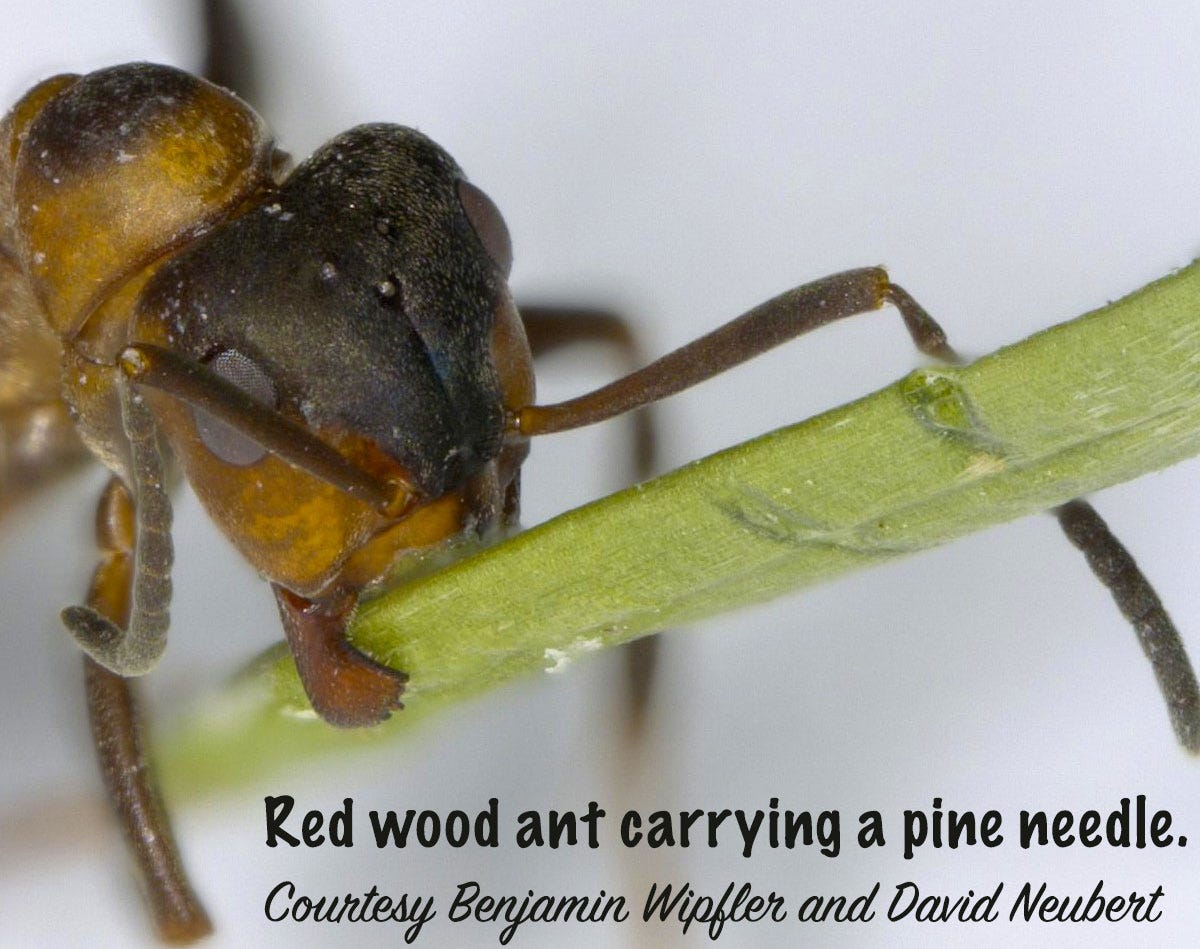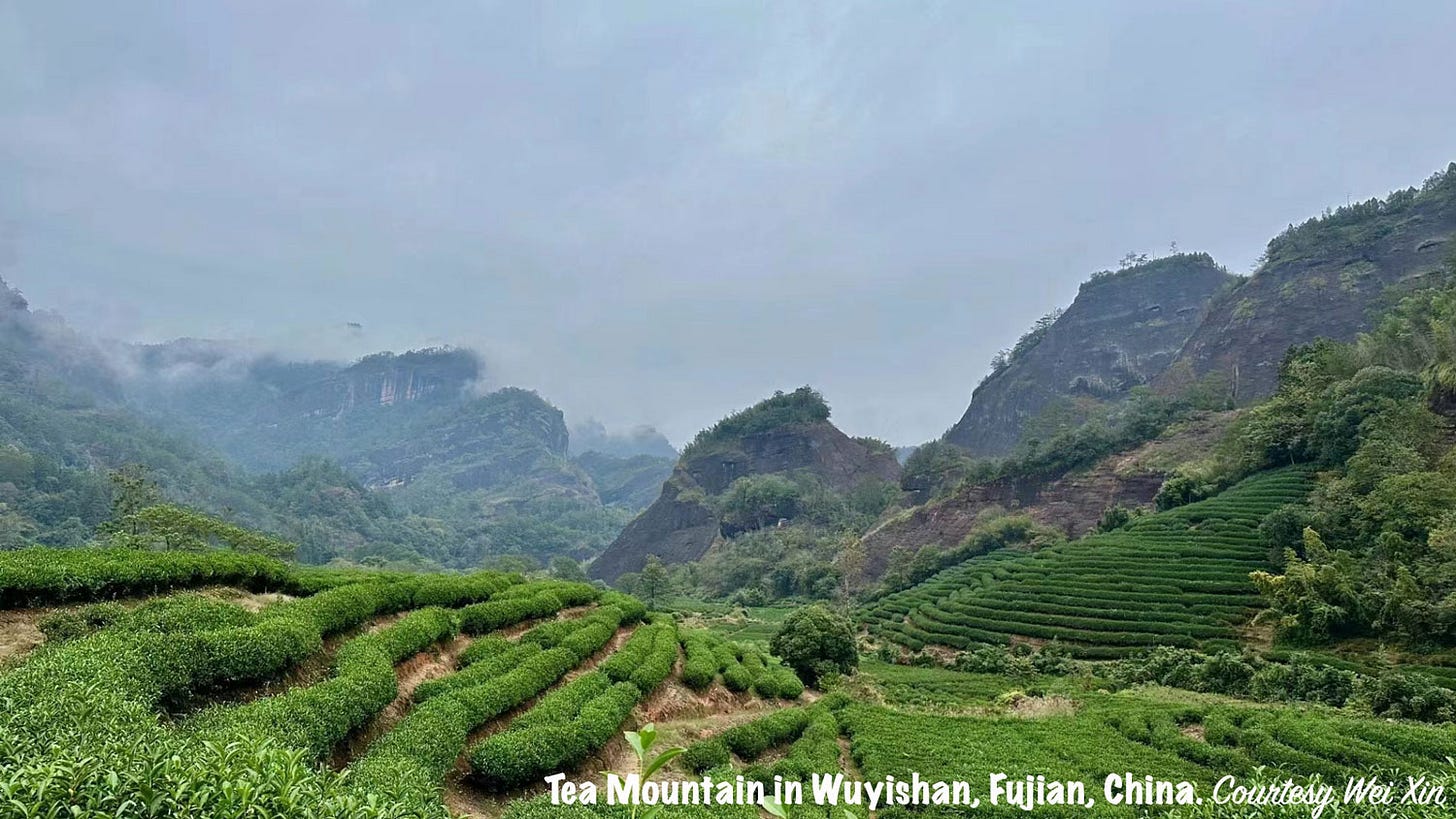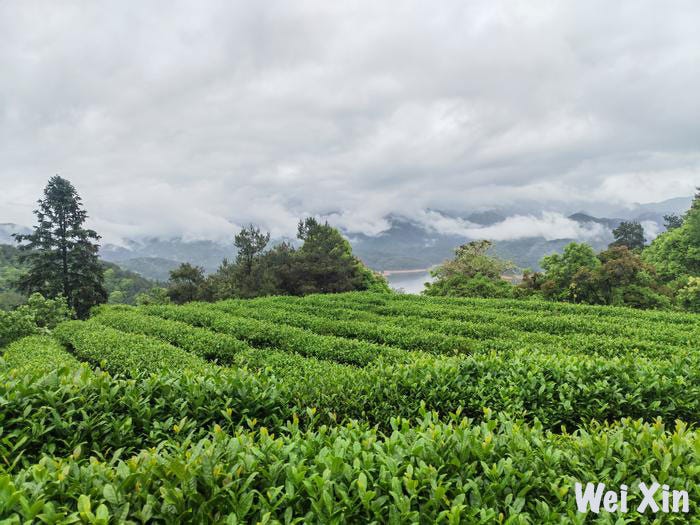Ant jaws, polar bears, a better cuppa tea, and why you can't swat a mosquito with one hand
Issue #4 of American Journalist
Friday, February 16, 2024
Here are some of our favorite critter-creature stories this week—JSB
1. A bank, a bow, and an insect lives to bite another day
The death of a mosquito in the air is pretty much the opposite as that of an actor on stage. Theater performers die to no applause, whereas the only way to kill a mosquito is to clap them hard between both hands. (Everyone knows you can’t swat a ’skeeter with one hand. (Unless you clap it against your arm or another hard surface—see how here.)
Using AI to analyze high speed videos of mosquitos in flight, etymologists at Wageningen University in the Netherlands have shown how they avoid swats when they’re airborne. The insects bank sharply left or right as a swat approaches and then simply ride the whirlwind, lifted to safety by the “bow wave” air column a would-be swatter makes. Clever critters! As I wrote 15 years ago, however, clapping forces two columns of air together and won’t allow the insects to escape. Current Biology
2. Coming soon to a surgery near you: An ant jaw
Weirdo animal stories and animal-inspired engineering and design are in many ways the bread and butter of modern science writing. People who pursue the latter are enamored of all the solutions nature has evolved to solve problems, few as elegant as this one.
Researchers at the Leibniz Institute for the Analysis of the Biodiversity Change in Bonn, Germany, and the Theodor Fontane Medical School in Brandenburg, Germany, have developed a surgical needle holder inspired by the mandibles of the ever-industrious red wood ant. Delicate mini-needle holders are essential tools for endoscopic surgery, which often require stitching sutures deep inside a person’s body. But the close confines and delicate surrounding tissue confound such operations because the more miniaturized the tools are, the less maneuverable and strong they will be—but only if you think in human-sized terms.
The ant has this problem solved. Its mandibles bite hard and have strangely elaborate movements unlike anything else in the insect world. Where most jaws are built on the principle of the simple ball-and-socket-joint chomp, ant mandibles articulate along several different planes. They glide, making them elaborately maneuverable and immensely inspiring for designers of surgical tools. And they’re super strong.
The researchers copied three design principles from ant mandibles: gliding, tilting, and their ability to shift power mid-bite. Applying these three principles to a commercially available surgical needle holder, they were able to amplify the force the tool could muster by 433 percent. PNAS
3. Sad, tough times for polar bears
How will climate change impact a top predator? A good preview of that is described in a study this week from the U.S. Geological Survey. USGS researchers monitored 20 polar bears captured on land in Wapusk National Park in Manitoba, Canada. They released the bears and followed their activities, weight, and diet during the late summer months of 2019, 2021, and 2022.
Polar bears are opportunistic omnivores capable of foraging and hunting all sorts of prey for food, but they are primarily ice-bound seal hunters. As arctic ice retreats due to global warming, polar bears are expected to spend more time on land, which risks starvation due to higher energy expenditures and spotty food availability.
Within these bears, there was no uniformity and actually an insane amount of variation in survival strategies. Some of the bears foraged, some sank into deep, almost hibernating slumbers, and some roamed great distances, eating what they could find—birds, bones, berries, and beluga whales if they were lucky. Three even undertook English Channel-scale swims of 54–175 km (33-109 miles). Overall, the researchers reported a 5.2-fold difference in daily energy expenditure and a 19-fold range in activity among the bears.
Sadly the one thing that was consistently the same was that none of the strategies seemed to work, whether energy expenditure was high or low. Of the 20 bears in the study, 19 of them lost weight. “Ultimately, our findings reinforce the risk of starvation for polar bears on land with forecasted increases in the onshore period,” the researchers conclude. Nature Communications
4. Did you hear the one about the ancient virus?
Researchers at the University of Cambridge and AltosLabs have discovered that an ancient evolutionary adaptation that has had a profound influence on the evolution of vertebrates may have been borrowed from an ancient virus.
One of the critical events in the evolution of vertebrates was the emergence of myelination, the surrounding of peripheral nerve fibers with protectively insulating myelin sheaths. It was critical for the evolution of animals, as this insulation allows electrical signals transmitted over nerve fibers to stay strong over longer distances, which means axons could be longer and bodies could grow to enormous sizes. Insulating myelin also allows thin, thin nerve fibers to transmit rapidly, which enabled the evolution of larger brains and more complex central nervous systems with bundled axons stretching into the periphery.
Apparently we have some ancient virus to thank for this. The researchers traced myelination to the action of retrotransposons—a genetic remnant of an ancient RNA retrovirus. At some forgotten juncture hundreds of millions of years ago, some poor fish, frogs, and forgotten mammals became sick and forever transformed. And thank Darwin that happened! Those retrovirus infections “were required for vertebrate evolution to take off,” the researchers said in a statement to the press. Cell
5. They put the “Tea” in terroir
One of the benefits of being a writer is discovering exotic, far-off places to add to your bucket list. Ours grew longer this week by one location after getting a glimpse at the terraced-green lushness and rolling hills of a place called Tea Mountain in Wuyishan, Fujian, China. How we long to sit on those supple slopes and sip the local produce!
The secret to a properly brewed tea is highly cultural, of course. Chinese tea ceremonies sometimes involve long soaks followed by ditching the first pour. The English are all about pre-heating the pot and carefully timing the brew—three minutes, no more. And Americans…hell we don’t care. Most U.S. tea comes from a powder in a can and is served cold with tons of added sugar.
But apparently there’s more than just culture in a good cup of tea—there’s viniculture as well. OK, we know that’s a term reserved for wines and for grape vines, so let’s say it’s whatever the equivalent is for tea plants (“cuppaculture”?).
This week researchers at Fujian Agriculture and Forestry University, Wuyi University in Fujian, the Shenzhen Institute of Advanced Technology in Guangdong, and the Chinese Academy of Sciences showed that the secret to a great cup of tea is highly influenced by microbiome—specifically the collection of microbes found on the roots of the plant. That microbial population controls the uptake of ammonium and nitrogen fertilizers in the soil, which promotes the synthesis of a chemical called theanine, which is a key factor in degerming the taste of tea leaves. (Post-harvest fermentation and other processing steps notwithstanding.)
The researchers found that they could enhance the flavor of teas by tinkering with the composition of the soil in which the plants are grown, mimicking the microbiome found in the rich soils of the Wuyi Mountains, where a favorite Oolong tea source known as Rougui is grown. Adding a synthetic mix of microbes to the soil of growing plants can increase theanine production in the leaves—even in the fine, already high-theanine-content Rougui teas, making those good-quality teas even better. Just think what that would do for the Nestea plunge! Current Biology











